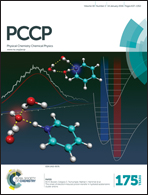Tuning the threshold voltage from depletion to enhancement mode in a multilayer MoS2 transistor via oxygen adsorption and desorption
Abstract
Selective chemical doping in two-dimensional (2D) molybdenum disulfide (MoS2) is attractive for tailoring electrical properties according to device requirements. However, the ultra-thin 2D nature of MoS2 makes it difficult to realize effective doping by conventional ion implantation. Here, a simple method based on low-temperature (150 °C) annealing in air is developed for effective chemical doping in MoS2. We have demonstrated that the threshold voltage (Vth) of multilayer MoS2 FET can be effectively tuned from depletion mode (Vth = −1.8 V) to enhancement mode (Vth = 1.1 V) by annealing in air at 150 °C. An energy band model based on electron trapping/detrapping due to oxygen adsorption on the MoS2 surface is proposed to explain the underlying mechanism. The model is consistent with an oxygen adsorption–desorption process evidenced by vacuum annealing that recovers the Vth to its original value. These results can provide a simple approach for Vth engineering and make a significant step toward 2D nanoelectronic device applications.


 Please wait while we load your content...
Please wait while we load your content...